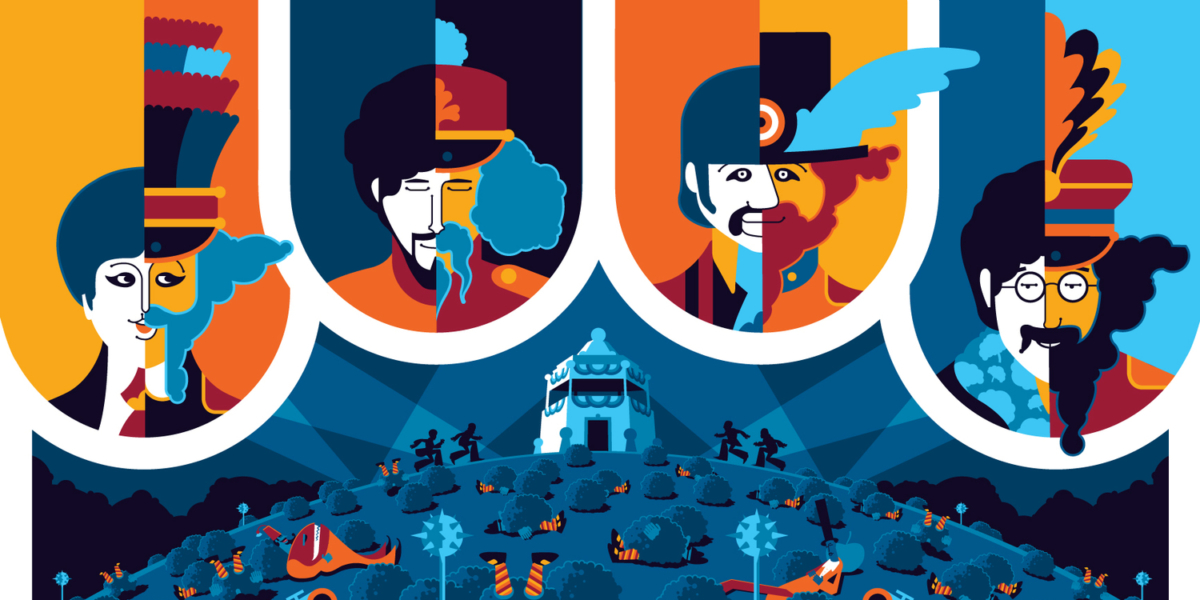
Artist Talk: Tom Whalen visiting PCA&D
. . .
Wednesday, September 1st, 2021
Looking to build a career in an art field? Art skills are crucial, says Tom Whalen, but so is “nimble adaptability” and some familiarity with business skills.
Whalen, whose graphically bold work is sought-after by clients such as Lucasfilm, Disney, Pixar, Marvel Studios, The Beatles, Metallica, Primus, The Black Keys, and Microsoft, will be on campus Thursday, Sept. 16, for an Artist Talk. His Atrium presentation will be open to all members of the PCA&D community. Masks are required.
Want to learn more before Whalen arrives on campus? We reached out for an online conversation to find out a little more not only about his inspirations, but also about what the artist thinks are crucial skills for art and design school students to develop now, before embarking on their careers:
You write on your website about falling in love with comics at an early age — were there certain characters whose “look” really captured your imagination the most? if so, what was it about them that grabbed you?
TW: As a kid, Spider-Man jumped off the comic racks at me. The bold, primary colors of his costume along with the intricate webbing details and large, expressive eyes were a combo that was irresistible to my young eyes. The science-fiction/military mash-up aesthetic of the ’80s G.I. Joe comics was also incredibly appealing (and influential) to me from an early age.
To attend online via Zoom, click here.
So often your work combines the illustration and the typeface — what special considerations do you take into account? Is it just as rewarding to design either one on its own?
TW: When I enrolled at Kutztown University, I was hell-bent on becoming an illustrator. A comic book illustrator, to be exact. It wasn’t until my sophomore year (when I started to get into the meat of the communication design curriculum) that I realized there was a lot more to my field than comic-based art. Classes like letterforms, package design, typography, and visual translation all had an impact on me. It was after exposure to these disciplines that I started to experiment with combining them with illustration into a cohesive style that I could call my own. To this day, I place equal emphasis on the typography, composition, and readability of an image as I do the rendering and drawing style.
“I think one of the fastest-moving currents in the field is the way work is delivered. Physical portfolios and in-person interviews have taken a back seat to digital portfolios and Zoom interviews. Diversification in both approaches and (most especially) nimble adaptability is key to success these days.”
Your field seems to be changing at a really rapid pace: Is that an accurate impression? What are some of the biggest changes you see in the last few years?
TW: I feel like the world is evolving at a rapid pace, and along with that, so goes design and illustration. I think one of the fastest-moving currents in the field is the way work is delivered. Physical portfolios and in-person interviews have taken a back seat to digital portfolios and zoom interviews. Diversification in both approaches and (most especially) nimble adaptability is key to success these days.
What kind of impact did the pandemic have on your field?
TW: For me, the most profound impact the pandemic had on the field (and maybe humanity in general) was the wake-up call that we are all in this together. My peer group has always been tight-knit. We’re always there for each other. But I feel like we depend on one other more than ever to bounce concerns, ideas, thoughts, and well-wishes off of each other. It’s definitely a positive side-effect of the murky times we live in.
Besides the art skills themselves, what skills are important for our students to emphasize before they head into the workplace to be successful?
TW: As much as I was prepared for the design, typography, and pre-press challenges I would face in the workplace, taxes, quotes, invoicing, and collections were all blind spots. It took years for me to get the business skills in place to be able to run a successful studio. That’s why I was so happy when I heard that PCA&D was developing “The Agency” to address this crucial skill set.
And a final question, based on this website’s bio: Would you be more successful facing a werewolf, zombie, or vampire (and which is more fun to draw?)
TW: Oh, I’d definitely be best suited to fight a zombie (a slow-moving one, that is), but I’d much prefer to draw a werewolf.
Swipe below to see a sampling of Whalen’s work. You can see more at strongstuff.net, and follow him on Instagram at @strongstuff.
The work of Tom Whalen











